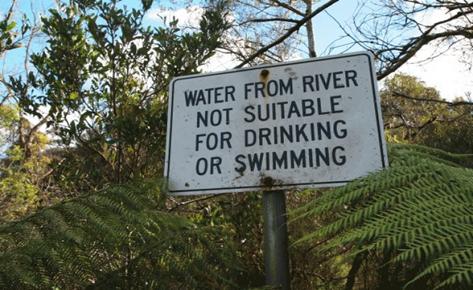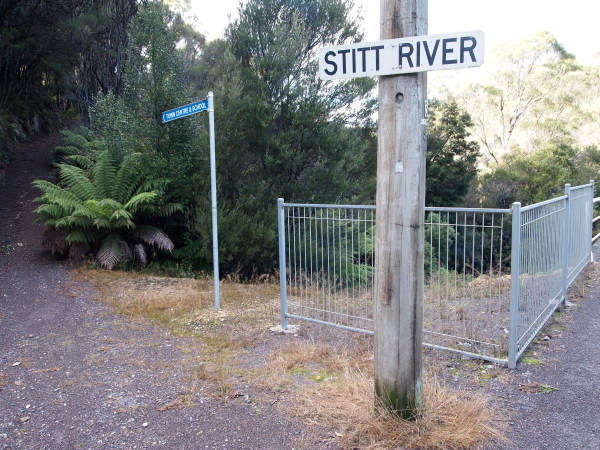 |
|||
| LEAD Action News Volume
13 Number 3, May 2013, ISSN 1324-6011 Incorporating Lead Aware Times ( ISSN 1440-4966) and Lead Advisory Service News (ISSN 1440-0561) The Journal of The LEAD (Lead Education and Abatement Design) Group Inc. Editorial Team: Elizabeth O’Brien, Zac Gethin-Damon, Hitesh Lohani and Shristi Lohani |
|||
|
About Us
|
Rosebery Number 7 in the Growing List 0f Tasmanian Towns That Have Metal Contaminated Drinking Water Supplies On Friday 17th May the Cradle Mountain Water authority released to the Tasmanian media results from routine drinking water quality monitoring in Rosebery which found high levels of lead in the reticulated drinking water supply to some areas of residential Rosebery. That afternoon a local ABC journalist contacted the Tasmanian Public and Environmental Health Network (TPEHN) for comment. On Monday 20th May TPEHN re-issued some of the main points contained in our Media Release that we had raised to the media after the Background Briefing program Don't Drink the Water went to air on 31st March: Rosebery drinking water contaminated with toxic heavy metals:
Cradle Mountain Water’s announcement today about high levels of lead found in drinking water in Rosebery is no surprise to the Tasmanian Public and Environmental Health Network. Spokesperson Isla MacGregor said “Rosebery is now the seventh town in Tasmania with drinking water supplies contaminated with toxic heavy metals. Five of the seven towns have been impacted on by local mines, Whitemark’s and Ringarooma’s water was sourced from areas near where mining has occurred.” The seven towns with drinking water supplies contaminated with lead are Whitemark, Pioneer, Ringarooma, Avoca, Royal George, Rosebery and Gormanston. Royal George’s water is also contaminated with arsenic and cadmium and Avoca with cadmium also. These poisoned water results from Rosebery cast serious doubts over the rigour and integrity of the EPA’s 2008-2009 investigation in Rosebery, an investigation which was highly criticised by the Toxic Heavy Metals Taskforce Tasmania. The Tasmanian Department of Health has allowed public health to be put at risk, by failing to act upon high levels of toxic metals in seven towns’ drinking water supplies. Tasmania must now be viewed as a Third World state with over one third of Tasmanian towns failing to provide raw drinking water that meets Australian Drinking Water Guidelines. The ABC Radio National Background Briefing program Don’t Drink the Water which went to air in April this year, highlighted the alarming levels of Lead, Cadmium and Arsenic found in drinking water in five towns that the Department of Health and Human Services and Ben Lomond Water Authority did not take timely action on and prevent further harm to the public.
Don’t Drink the Water exposed information that showed the Tasmanian Department of Health and Human Services (DHHS) for failing to:
“Ben Lomond Water has to date still not ascertained where the lead in the water at Ringarooma is coming from. This is not good enough.” The World Health Organisation (WHO) and the US Centers for Disease Control (USCDC) have said that there is no safe level of lead, and that drinking water should never have more than 10ppb of Lead. “We want to see full public disclosure by Tasmanian water authorities of all their data, their proposed future monitoring programs and what action they intend to take to provide reticulated safe drinking water.” “No mining town in Tasmania treats their drinking water supplies to remove metals. The Rosebery drinking water supply is taken from the Stitt River which is publicly signed on the Murchison Highway as being unfit for drinking.” “MMG must act to improve this water problem for Rosebery workers and residents. Water supply intakes could easily be relocated to uncontaminated waterways or effective treatment plants installed.” Prof Mark Edwards*, a leading expert in Lead Contamination in Drinking Water in the US said that drinking water with Lead levels of 40 ppb are an ‘imminent and substantial danger to children’. The Health system has failed in their duty of care to protect the health of Tasmanians especially those living in regional areas and needs to appoint people who really do understand their duty of care and will act accordingly. “TPEHN want an independent inquiry established into the state of Tasmania’s unsafe drinking water supplies as a matter of urgency. Clean drinking water needs to be considered a fundamental human right. “. said Isla MacGregor. *Pic: The Stitt River - the intake for the Rosebery water supply is upstream of this sign. The intake for the town’s water supply is directly below the main drainage zone for the AMD (acid mine drainage) from the open cut at the mine and the same area that the poisoned Rosebery residents lived - only one person of those who were poisoned in Rosebery remains in the town. Groundwater from this drainage area flows directly into the Stitt River at the town’s water supply intake. |
||
|
About
Us |
bell
system lead poisoning |
Contact Us
| Council
LEAD Project | egroups | Library
- Fact Sheets | Home
Page | Media Releases |
|||
|
Last
Updated 05 June 2013
Copyright © The LEAD Group Inc. 1991- 2013 PO Box 161 Summer Hill NSW 2130 Australia Phone: +61 2 9716 0014 |
|||

